Whistleblower Information
|
|
|
|
|
Top
|
Intellectual Curiosity vs. Agenda
From Dwight D. Eisenhower's Farewell Address to the Nation on January 17, 1961:
"Today, the solitary inventor, tinkering in his shop, has been overshadowed by task forces of scientists in laboratories and testing fields. In the same fashion, the free university,
Yet, in holding scientific research and discovery in respect, as we should, we must also be alert to the equal and opposite danger that public policy could itself become the captive of a scientific-technological elite. It is the task of statesmanship to mold, to balance, and to integrate these and other forces, new and old, within the principles of our democratic system – ever aiming toward the supreme goals of our free society. Another factor in maintaining balance involves the element of time. As we peer into society's future, we -- you and I, and our government -- must avoid the impulse to live only for today, plundering for our own ease and convenience the precious resources of tomorrow. We cannot mortgage the material assets of our grandchildren without risking the loss also of their political and spiritual heritage. We want democracy to survive for all generations to come, not to become the insolvent phantom of tomorrow." Text for Eisenhower's farewell address Audio for Eisenhower's farewell address |
Top
|
NIST's use of the word "collapse" is deceptive
NIST's use of the word "collapse" is deceptive to describe what is seen in the figure above. My
NCSTAR 1’s title is flawed in that the visual evidence set
forth in my RFC demonstrated that the nomenclature “collapse” as
contained in the title and throughout NCSTAR 1 is false, deceptive and
misleading. The use of the word “collapse” does not, then, comport with,
among other things, the integrity component of data quality
requirements. The World Trade Center Towers did not collapse. Instead,
they were quite obviously pulverized from top to bottom. While NCSTAR 1
acknowledges that “…the stories below the level of “collapse” initiation
provided little resistance to the tremendous energy released by the
falling building mass, the building section above came down essentially
in free fall, as seen in videos.”
NIST cannot make a statement that the World Trade Center towers came down in “free fall” on one hand, andthen indicate, on the other, that doing so is a form of collapse. The conditions there involved are not a collapse; and, in any event, NIST acknowledges that it does not analyze that part of the sequence of events; thus, it is utterly incongruent for NIST to describe that which it acknowledges went without analysis on its part. Use of the descriptive word “collapse” to describe a process whereby the twin towers were turned to dust without the ability to have top heavy mass interact with mass underneath the pulverized mass sufficient to satisfy the criteria of two of the laws of physics is visibly obvious. The two laws of physics that are violated to such a degree that they are ignored altogether by NIST, in complete and total derivation of the requirements of the DQA are: Law of Conservation of Momentum; and Law of Conservation of Energy. |
Top
|
Contact Information
|
Top
|
Military-Industrial Complex
Origin of the term
The first public
use of the term was by the Union of Democratic Control, formed by Sir
Charles Trevelyan in the United Kingdom on 5 August 1914. Point Four of
their pacifist manifesto declared: 4. National armaments should be
limited by mutual agreement, and the pressures of the
military-industrial complex regulated by the nationalisation of
armaments firms and control over the arms trade.[2]
President of the United States (and former General of the Army) Dwight D. Eisenhower later used the term in his Farewell Address to the Nation on January 17, 1961:
|
||||
| Source: Wikepedia: Military-industrial complex |
Top
NIST's use of the word "collapse" to describe
what is seen here is deceptive:
what is seen here is deceptive:
Selected Photos:
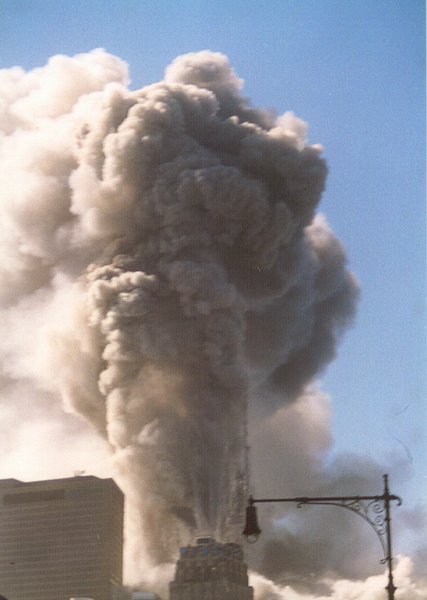 |
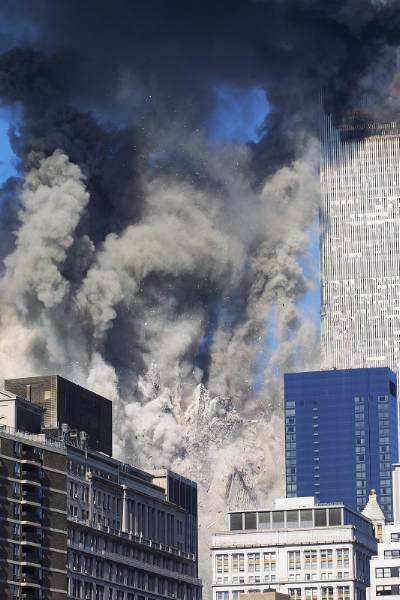 |
||
|
Figure 5.
|
Figure 6.
|
Figure 7.
|
Figure 8.
|
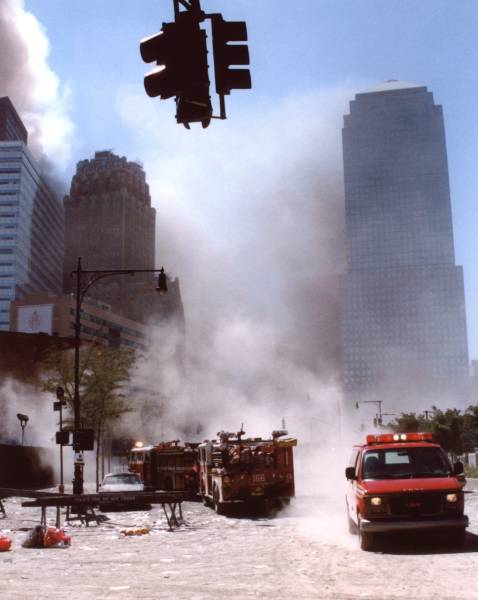 |
|
|
Figure 9. If dust settles so quickly
|
Figure 10. Why does it again rise up?
|
 |
 |
|
Figure 11. Where did the building go?
|
Figure 12. Where did the building go?
|
|
Figure 13. Not down here.
|
Figure 14. Location of previous photo.
|
|
Figure 15. Why is this beam shriveled up? The
wrinkled beam in the front "gash" of the Bankers Trust building, which
didn't have a fire. This photo is from FEMA report: (Fig6-10.) [Link(pdf)] |
Figure 16. Wrinkled beams. Photo by FEMA (9/13/01). |
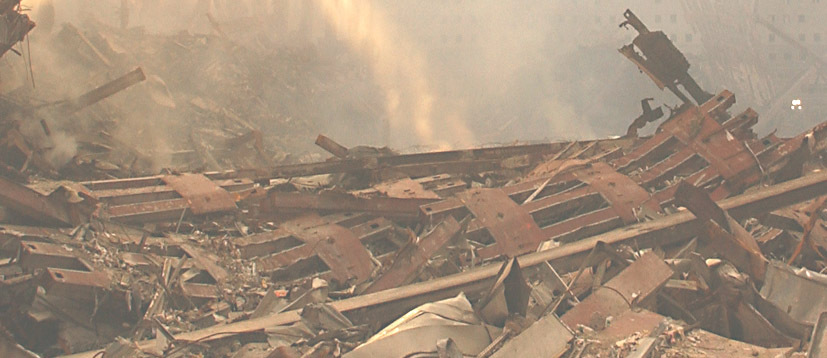 |
 |
| Figure 17. 9/15/01 Dry weather | Figure 18. 9/16/01 Dry weather |
| If there was molten metal in the basements, wouldn't you expect more "steam" in the wet weather than in the dry weather? see page about molten metal |
 |
 |
| Figure 19. 9/20/01 Wet weather | Figure 20. 9/20/01 Wet weather |
This is not what a collapse looks like!
|
Figure 20. Does this look like a collapse to you?
|



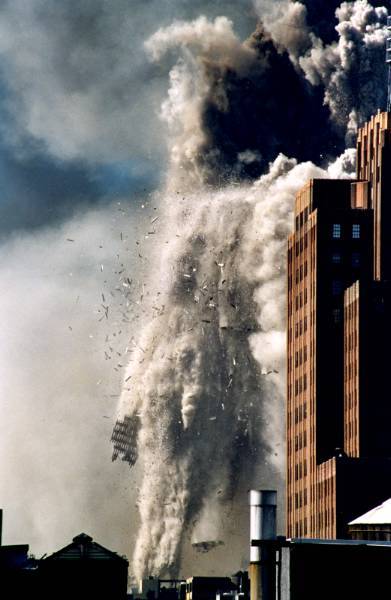

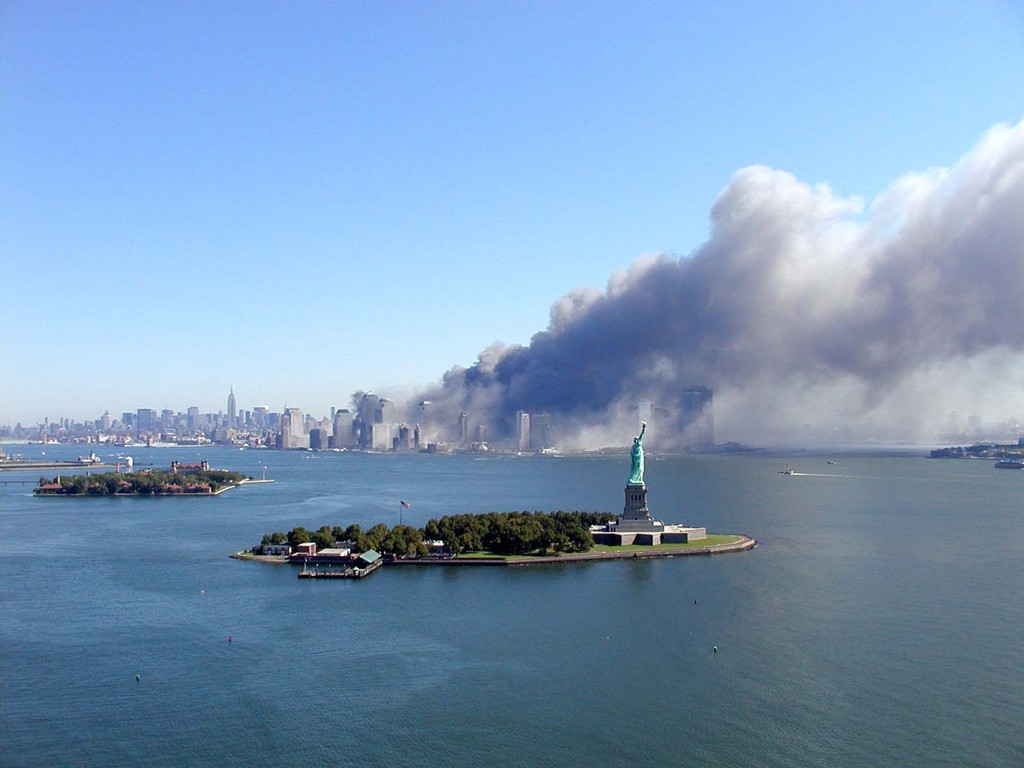
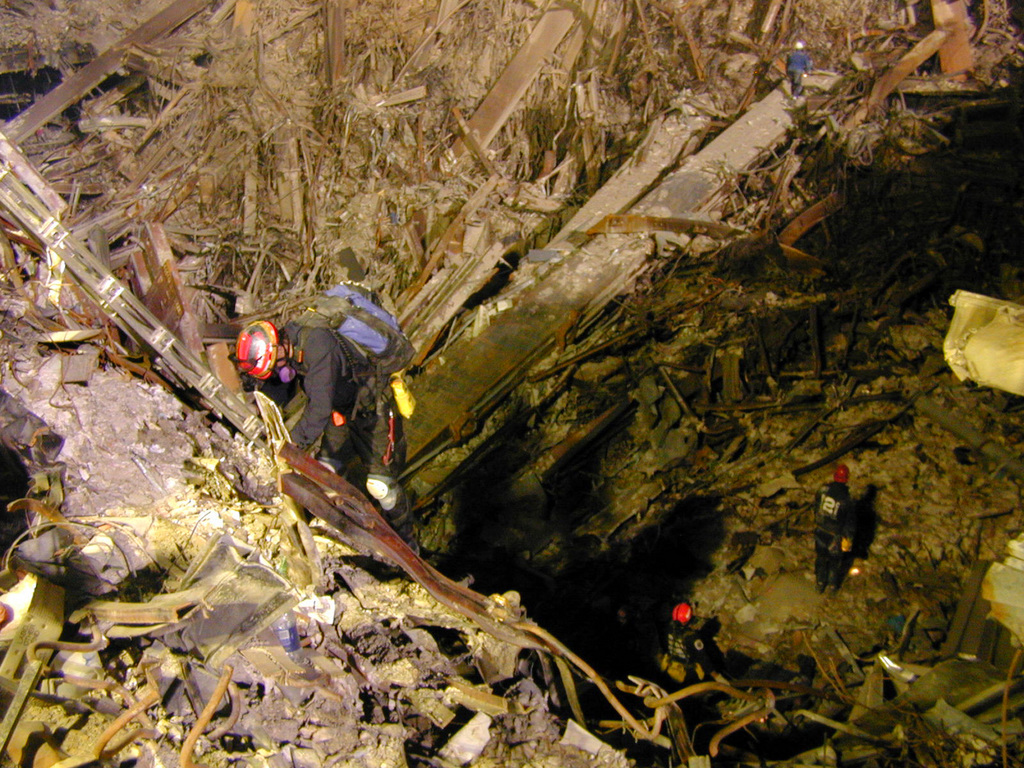
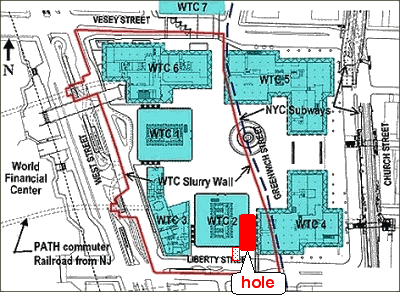
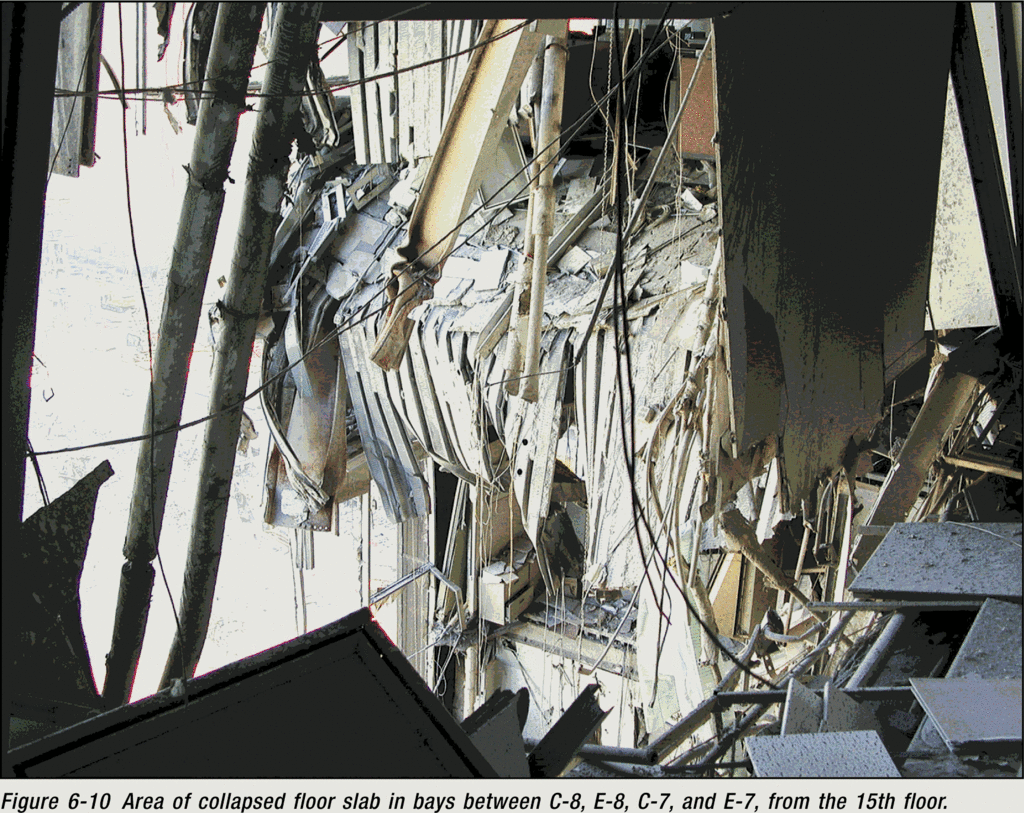

No comments:
Post a Comment